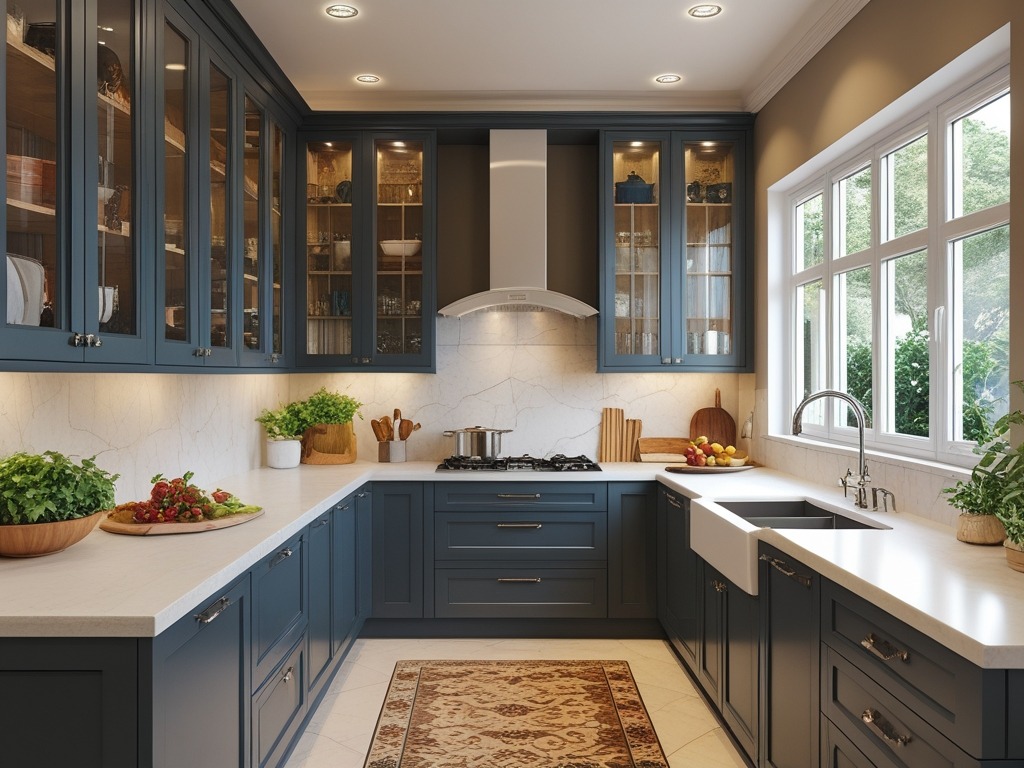
Are you ready to elevate your culinary experience and transform your cooking space into a haven of creativity and efficiency? The L-shaped kitchen is not just a trend; it’s a timeless design that has captivated homeowners, aspiring chefs, and interior designers alike.
With its unique layout that seamlessly blends functionality with aesthetic appeal, an L-shaped kitchen offers the perfect balance between style and practicality. Imagine whipping up gourmet meals in a space that enhances your workflow while also serving as a stunning backdrop for entertaining guests—this is the magic of an L-shaped kitchen design.
Maximizing both cooking efficiency and visual allure is essential for any kitchen, and the L-shape layout excels in this regard. By strategically positioning countertops, appliances, and storage solutions, homeowners can create a culinary workspace that feels intuitive and inviting.
Whether you’re an experienced chef or someone who simply enjoys the art of cooking, understanding how to leverage this popular kitchen layout can unlock new possibilities for meal preparation and social gatherings.
In the following sections, we will explore the myriad benefits, design elements, and inspiring ideas that will help you transform your cooking space into the ultimate kitchen in L shape. Get ready to embark on a journey that celebrates both your culinary passion and personal style!
Benefits of an L-Shape Kitchen
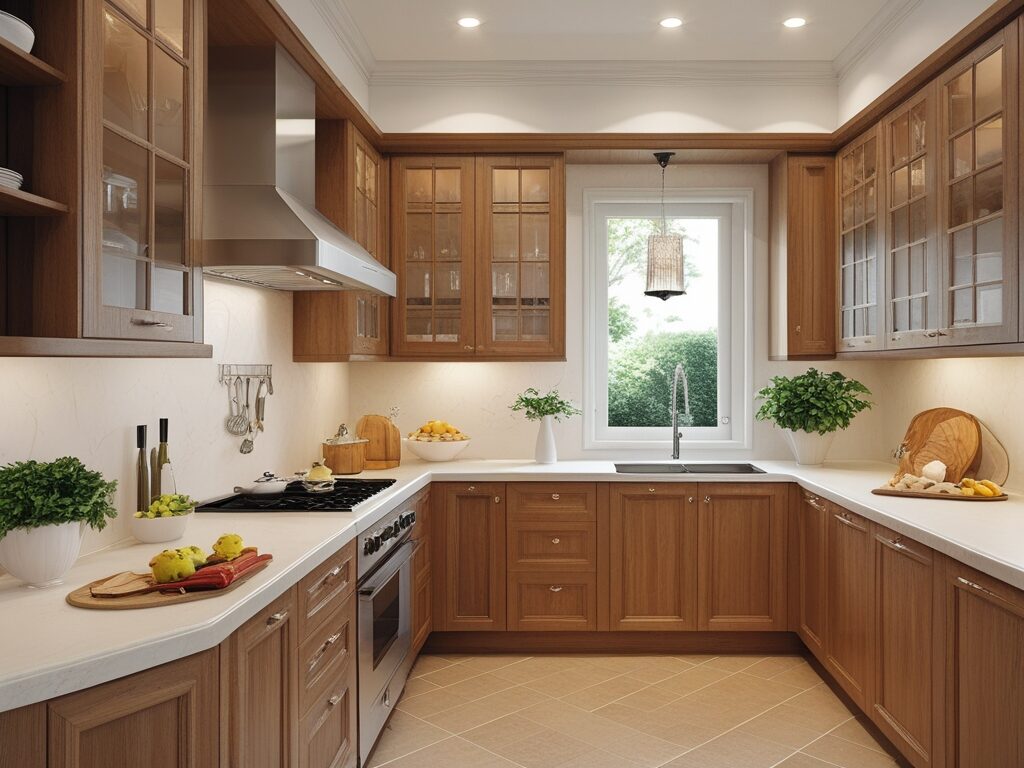
One of the standout advantages of a kitchen in L shape is its ability to enhance workflow and accessibility. By positioning key elements like the stove, sink, and refrigerator in a triangular layout, you can streamline your cooking process significantly.
This design not only minimizes unnecessary movement but also allows for easy collaboration when entertaining guests or cooking with family members. Imagine preparing a meal while your partner sets the table just a few steps away; this synergy is possible with an efficient L-shaped layout.
Space optimization is another compelling benefit of L-shaped kitchens. The configuration offers ample countertop space that can double as a breakfast bar or an informal dining area, making it perfect for both cooking and entertaining.
Whether you’re hosting a dinner party or enjoying a quiet family breakfast, the open design encourages interaction and flow. Moreover, the corners of L-shaped kitchens provide excellent opportunities for creative kitchen storage solutions, such as corner cabinets that utilize every inch of space, keeping countertops clutter-free and organized.
Versatility is perhaps one of the most appealing aspects of an L-shape kitchen. This layout can easily adapt to various home styles, whether you prefer modern kitchen styles with sleek finishes or a more traditional aesthetic featuring rustic wood cabinetry.
For instance, in a contemporary setting, you might opt for minimalist cabinetry paired with bold color accents, while a farmhouse-inspired design could incorporate open shelving and vintage decor. The L-shape allows homeowners to express their unique tastes while ensuring that the kitchen remains functional and welcoming.
In summary, an L-shaped kitchen not only promotes an efficient cooking environment but also maximizes space for socializing and showcases versatility in design. By embracing these benefits, you can transform your cooking space into a hub of creativity and connection, tailored perfectly to your lifestyle.
Key Design Elements of L-Shape Kitchen
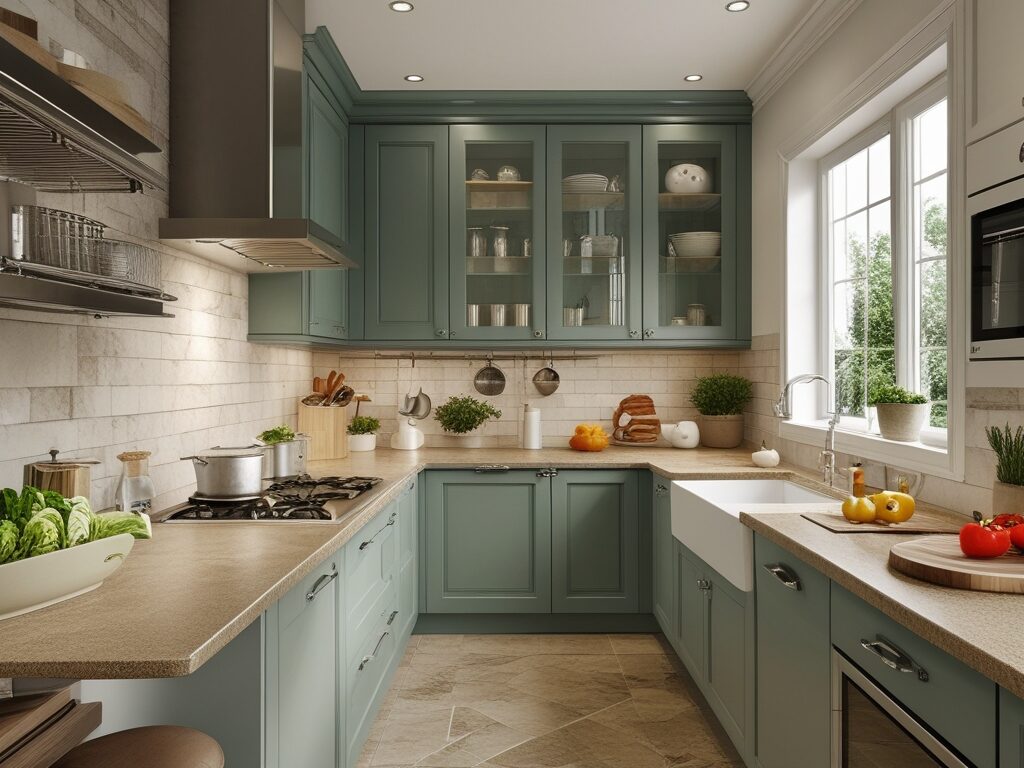
When it comes to crafting an efficient cooking space, countertop space and layout are paramount in an L-shape kitchen. An ideal design incorporates ample counter area for food preparation, cooking, and even casual dining. Consider extending the countertop to form a breakfast bar or an island that can double as additional workspace.
This not only enhances functionality but also creates a natural gathering spot for family and friends. For those with limited square footage, small kitchen tips suggest using a fold-down table or a movable island to maximize utility without sacrificing space.
Choosing the right cabinetry and finishes is another crucial element in your L-shaped kitchen transformation. Opt for sleek, modern cabinetry with clean lines to create a streamlined look that complements the kitchen’s layout. Open shelving can be a fantastic choice for displaying beautiful dishware or cookbooks while making the space feel more open and inviting.
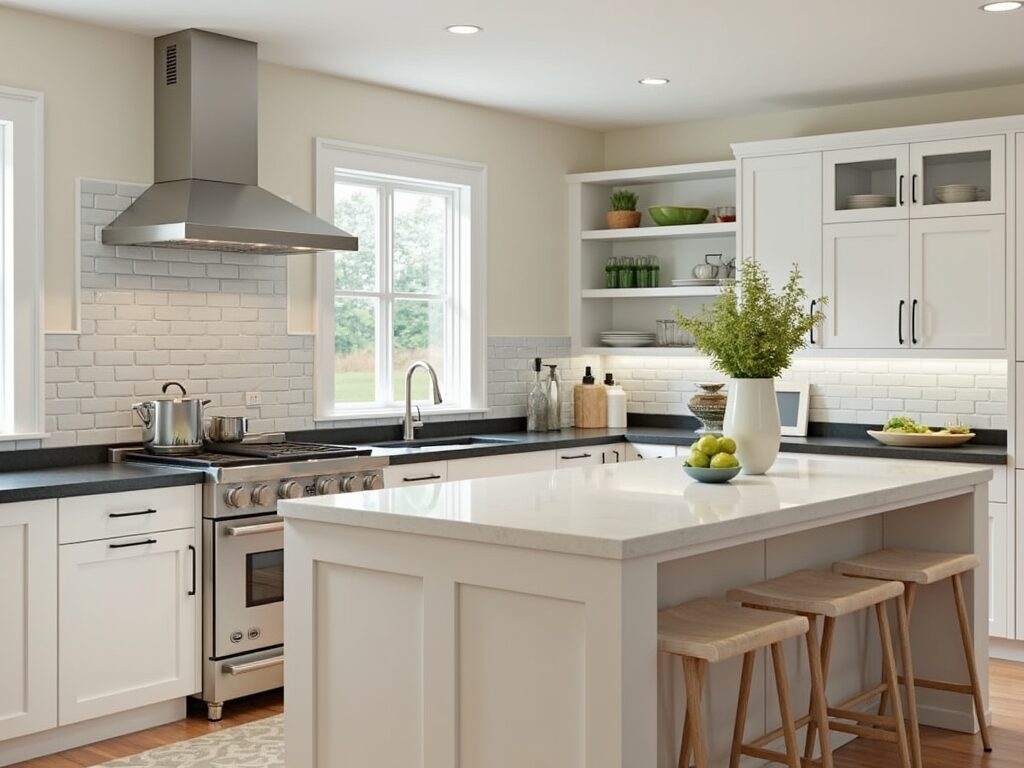
Additionally, selecting finishes that reflect your personal style—be it rustic wood, glossy white, or bold colors—can significantly influence the overall ambiance of the kitchen. Consider incorporating contrasting elements, like dark cabinets with light countertops, to add depth and visual interest.
Lighting is often overlooked yet plays a vital role in defining both functionality and ambiance in your L-shaped kitchen. A well-lit kitchen not only facilitates efficient cooking but also sets the mood for entertaining. Incorporate layered lighting by combining overhead fixtures, under-cabinet lighting, and pendant lights above work areas.
For example, using dimmable LED lights can help transition the space from bright task lighting during meal prep to a warm glow for intimate dinners. Remember, the right lighting can enhance design features and make even the smallest kitchens feel spacious and welcoming.
Maximizing Storage Solutions
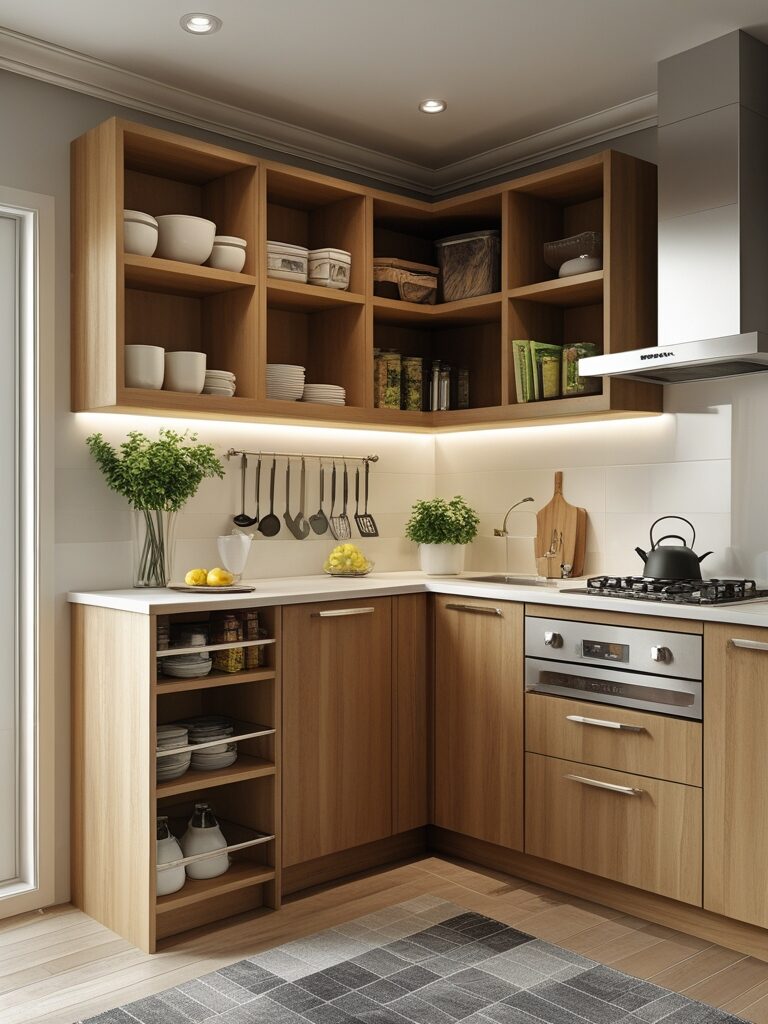
When transforming your cooking space into a functional and stylish kitchen in L shape, maximizing storage solutions is crucial.
One effective way to achieve this is by utilizing vertical space with shelves and cabinets.
High-reaching cabinets can provide ample storage for items you rarely use, such as holiday dishes or specialty appliances, while open shelves can showcase your favorite cookbooks or decorative dishes, adding a personal touch to your kitchen.
For an added bonus, consider installing floating shelves above the countertops to keep essential tools within arm’s reach without cluttering your workspace.
Innovative storage ideas can also revolutionize how you organize your kitchen tools. For instance, incorporating pull-out drawers is a game-changer, allowing easy access to pots and pans that might otherwise get lost in deep cabinets.
Lazy Susans are another smart solution, ideal for corner cabinets where space can be challenging. These rotating trays can house spices or canned goods, making it easy to find what you need without digging through stacks of items. By integrating these creative solutions into your kitchen renovation guide, you ensure that every inch of space works hard for you.
Additionally, organizing your kitchen tools for easy access will enhance your cooking experience. Use drawer dividers to separate utensils, ensuring that spatulas, whisks, and knives are neatly arranged and easily reachable.
Consider adding magnetic strips on walls or inside cabinet doors for storing knives or small metal tools, keeping them organized yet out of the way. These small organizational tweaks can make a significant difference in the flow of your open concept kitchens, allowing you to move effortlessly between cooking and entertaining.
In summary, maximizing storage solutions in an L-shape kitchen goes beyond mere aesthetics; it’s about creating an efficient workspace that inspires culinary creativity.
By utilizing vertical space, embracing innovative storage ideas, and organizing your tools effectively, you’ll transform your kitchen into a functional hub that reflects both style and practicality. This thoughtful approach not only elevates the kitchen’s design but also enhances your overall cooking experience.
Creating a Functional Work Triangle
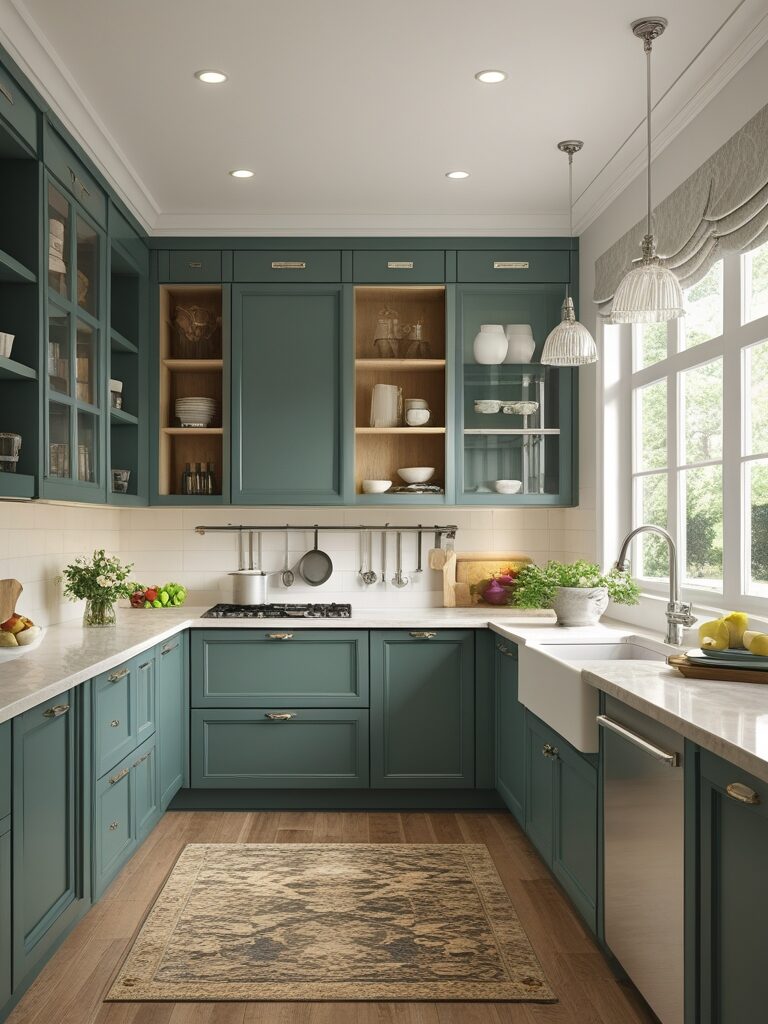
The concept of the work triangle is fundamental in kitchen design, particularly for L-shaped kitchens. This design principle focuses on the relationship between the three primary work areas: the stove, the sink, and the refrigerator.
By positioning these essential elements in a triangular formation, you can maximize kitchen space and streamline your cooking process, making it easier to move between tasks without unnecessary backtracking.
For instance, placing your stove adjacent to the sink allows for easy transfer of pots and pans, while having the refrigerator within arm’s reach ensures quick access to ingredients as you prepare meals.
To achieve optimal efficiency, consider the distances between these critical points. Ideally, each leg of the triangle should be between 4 to 9 feet; this ensures that you can navigate your kitchen seamlessly. An example of effective appliance placement could involve situating the refrigerator at one end of the L-shape, the stove on the adjoining wall, and the sink positioned centrally.
This configuration not only maintains a clear pathway but also enhances functionality, allowing multiple cooks to work together without feeling cramped. Additionally, ensure that appliances are not placed directly next to each other to avoid congestion during peak cooking times.
Maintaining flow between cooking, cleaning, and prep areas is vital for a stylish kitchen decor that marries form with function. To enhance this flow, think about incorporating a prep island if space permits.
This addition can serve as a versatile surface for chopping vegetables or assembling dishes while keeping your cooking zone organized. Furthermore, consider implementing open shelving or additional cabinetry nearby to store frequently used items like cutting boards and utensils, thus reducing clutter and improving accessibility.
Lastly, don’t overlook the importance of lighting in supporting your kitchen workflow. Well-placed task lighting over the sink and prep areas can make a significant difference in visibility, while ambient lighting throughout the kitchen adds an inviting atmosphere. By thoughtfully creating a functional work triangle, you not only elevate the efficiency of your cooking space but also cultivate an environment that inspires creativity and joy in culinary exploration.
Aesthetic Enhancements of L-shape Kitchen
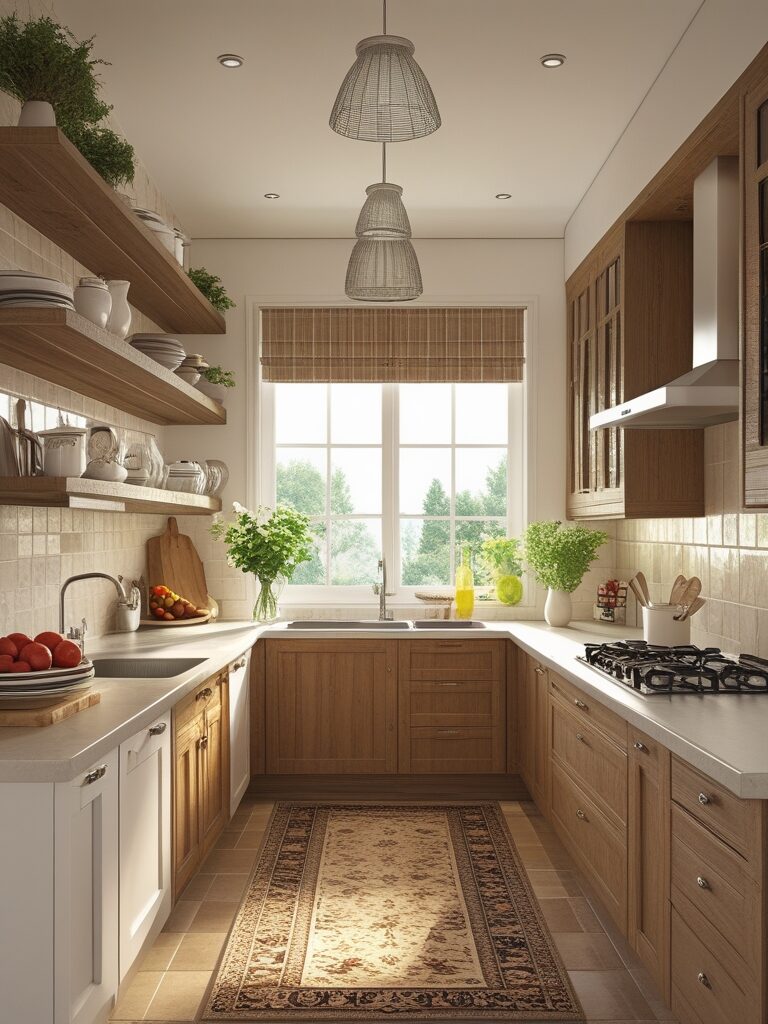
When it comes to designing an L-shaped kitchen, the aesthetic appeal can significantly enhance your cooking experience while providing a welcoming environment for family and guests.
Choosing the right color schemes is essential; soft, neutral tones like whites, grays, or beiges can create a clean and spacious feel, while bold colors such as navy blue or emerald green can add a striking focal point.
Pairing these colors with natural materials, like wooden cabinetry or stone countertops, not only adds warmth but also complements the kitchen’s functionality. For instance, an L-shaped island for the kitchen can be painted in a contrasting hue to create visual interest and serve as a gathering spot for casual meals.
Personal touches are what truly make an L-shaped kitchen your own. Consider accessorizing with decorative items that reflect your personality, such as colorful dishware displayed on open shelving or unique wall art that inspires your culinary creativity.
Incorporating greenery through potted herbs or hanging plants not only beautifies the space but also provides fresh ingredients at your fingertips. Additionally, utilizing stylish storage solutions, like chic baskets or elegant jars, can elevate the overall aesthetic while keeping your kitchen organized and clutter-free.
Balancing style with practicality is crucial in kitchen design, particularly in an L-shaped layout where space is often limited. Opt for materials that are both visually appealing and durable, such as quartz countertops that mimic the look of marble without the high maintenance.
When selecting finishes for cabinets, consider easy-to-clean options like semi-gloss paint or laminate surfaces that stand up to everyday wear and tear. Moreover, strategic lighting choices can enhance both functionality and ambiance; pendant lights above an L-shaped island for the kitchen can provide task lighting while adding a touch of elegance.
Ultimately, your L-shaped kitchen should be a reflection of your personal style while remaining practical for everyday use. By thoughtfully considering color schemes, materials, and decor, you can create a beautiful space that inspires culinary creativity and fosters connection with loved ones.
Embrace the process of transformation by infusing your unique aesthetic into every corner of your kitchen, ensuring it becomes not just a place to cook, but a warm and inviting hub for gatherings and memories.
Common Mistakes to Avoid
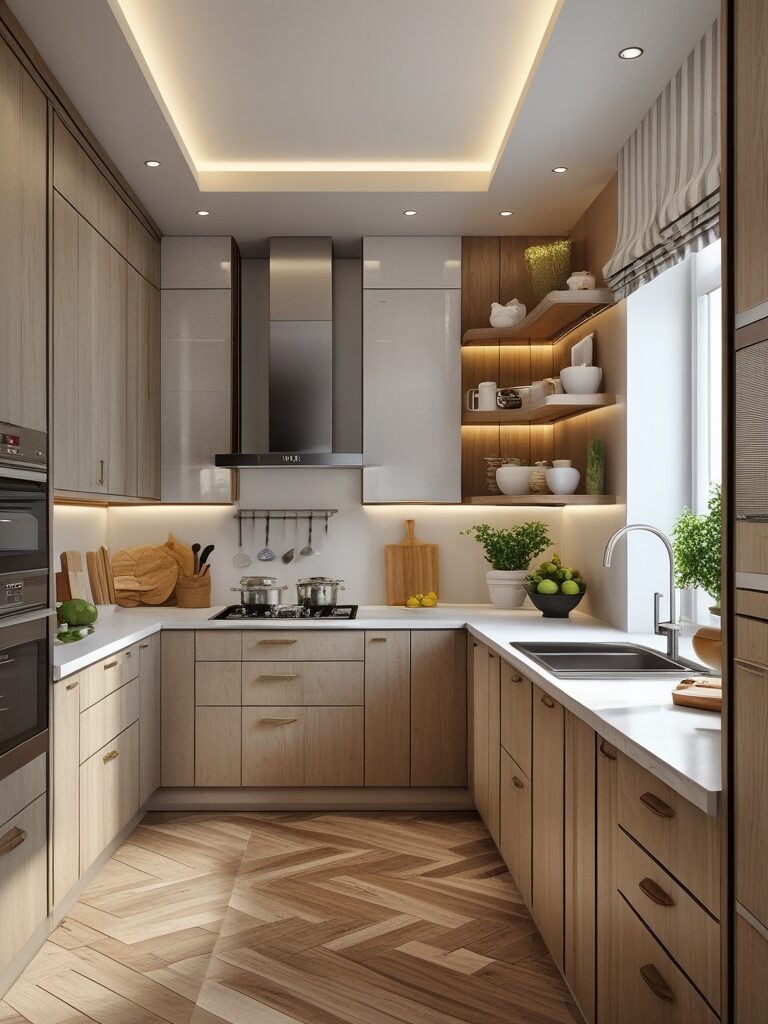
When designing your dream L-shaped kitchen, it’s crucial to steer clear of common pitfalls that can hinder both functionality and aesthetics.
One prevalent mistake is overcrowding the kitchen with unnecessary items. An L-shaped kitchen layout offers a beautiful balance of space and efficiency, but if you fill it with excess gadgets, decor, or furniture, you’ll compromise its potential.
For instance, while a trendy stand mixer may be a must-have for aspiring bakers, keeping it permanently on the counter can quickly clutter the space.
Instead, consider utilizing cabinets or pantry space to store seldom-used appliances, ensuring your countertops remain clean and inviting.
Another critical aspect often overlooked is traffic patterns and movement flow. In an L-shaped kitchen with an L-shaped island, it’s vital to create a layout that allows for smooth navigation between cooking, cleaning, and entertaining zones. Ignoring this can lead to frustrating bottlenecks, especially when multiple people are using the kitchen simultaneously.
For example, if the refrigerator is placed too close to the cooking area without sufficient walking space in between, family members or guests may feel cramped or in each other’s way. To avoid this, carefully plan your work triangle and ensure there’s ample room for movement—aim for at least 42 inches of clearance between the island and surrounding counters.
Lastly, underestimating the importance of good lighting can severely impact your kitchen’s functionality and mood. A well-designed L-shaped kitchen needs a combination of task, ambient, and accent lighting to create a balanced atmosphere. Relying solely on overhead fixtures can leave dark corners and shadows that make cooking cumbersome.
Instead, incorporate under-cabinet lights for direct illumination while prepping meals, pendant lights above the island for style and focus, and dimmable options for creating an inviting ambiance during gatherings.
By prioritizing effective lighting solutions, you not only enhance the look of your kitchen but also elevate its overall usability. Avoiding these common mistakes will help you maximize both the aesthetic appeal and practical use of your L-shaped kitchen.
Inspiration from Successful L-Shape Kitchen Designs
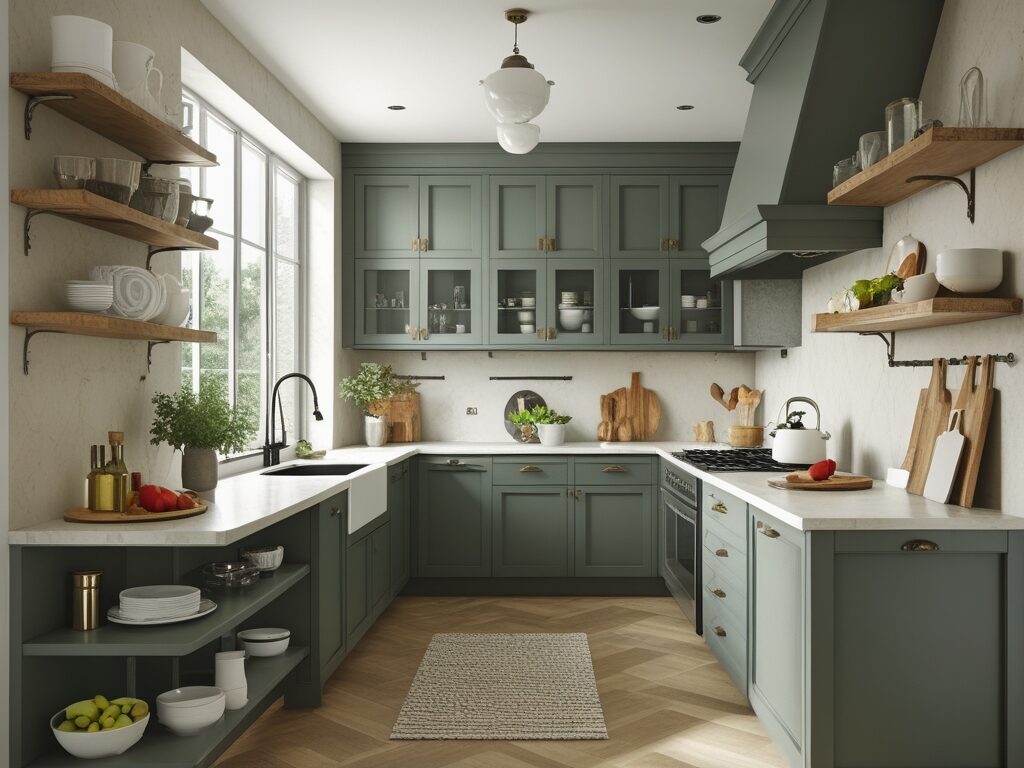
When it comes to designing a kitchen in L shape, the variety of styles available can truly inspire homeowners and aspiring chefs alike. Modern L-shaped kitchens often feature sleek lines, minimalist cabinetry, and high-tech appliances that create a streamlined and functional workspace.
For instance, a recent renovation showcased a stunning white and gray color palette with stainless steel accents. This design not only maximizes natural light but also makes the cooking area feel more open and inviting. Incorporating an island can further enhance the modern aesthetic, offering additional prep space while doubling as a casual dining area.
On the other hand, traditional L-shaped kitchens exude warmth and charm, often featuring rich wood cabinetry and classic tile backsplashes. A great example is a cozy farmhouse-style kitchen that utilizes deep mahogany cabinets paired with vintage-inspired hardware.
The use of a distressed wooden island adds character while providing essential storage. Elements like open shelving filled with rustic dishware or decorative jars can infuse personality into the space, making it not just a cooking area but a gathering spot for family and friends.
For those drawn to eclectic designs, an L-shaped kitchen can serve as a canvas for creativity. Consider a vibrant space where bold colors meet unique textures—a bright turquoise backsplash against soft cream cabinetry can create a stunning visual impact.
Accessories like mismatched bar stools and vintage decor items can further enhance this style, making each corner of the kitchen a conversation starter. Real-life examples of such designs can often be found in social media platforms or home décor blogs, providing endless inspiration for those looking to personalize their kitchen.
To draw inspiration from existing designs, explore platforms like Pinterest or Instagram, where countless homeowners showcase their L-shaped kitchens. Pay attention to how they balance functionality with aesthetics; notice the clever storage solutions they employ or how they position their appliances for efficiency.
Visiting local home shows or design expos can also offer firsthand insight into the latest trends and timeless styles. Embrace these ideas to create an L-shaped kitchen that not only reflects your personal taste but also enhances your culinary experience.
Budgeting for Your L-Shape Kitchen Transformation
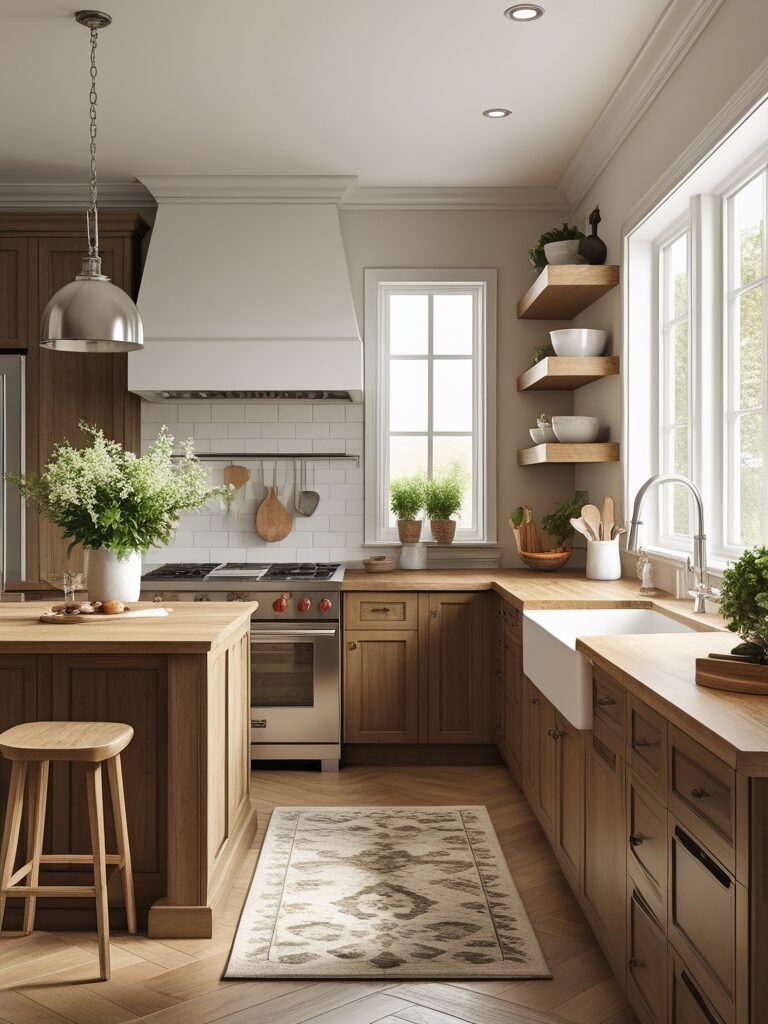
Transforming your cooking space into a stunning L-shape kitchen can be a rewarding endeavor, but it’s essential to approach budgeting with a clear plan.
Start by estimating costs for renovations and upgrades. Depending on your current kitchen layout and the materials you choose, expenses can vary widely.
For example, a minor facelift involving new paint and hardware could range from $500 to $2,000, while a complete remodel with custom cabinetry and high-end appliances might cost anywhere from $15,000 to $50,000 or more. It’s wise to create a detailed budget that includes all potential expenses—materials, labor, appliances, and unexpected costs—to avoid financial surprises along the way.
When deciding between DIY projects and hiring professionals, consider the pros and cons of each option. DIY can be an appealing choice for homeowners looking to save money or showcase their creativity; however, it requires time, skill, and sometimes a steep learning curve.
For instance, while you might successfully install a backsplash yourself, plumbing or electrical work might be better left to licensed professionals.
Hiring experts can ensure quality workmanship and adherence to local building codes, but it often comes with a higher price tag. Balancing your skills and budget will help you determine the best approach for your transformation.
To maximize your budget without compromising on quality, consider implementing strategic cost-saving measures. One effective tip is to shop sales and clearance items for materials and appliances; many retailers offer discounts during holiday sales or seasonal events.
You can also explore second-hand options for cabinets and fixtures at local thrift stores or online marketplaces. Another way to save is by focusing on a few high-impact upgrades—such as investing in durable countertops or stylish lighting—while opting for budget-friendly options elsewhere. This tactic allows you to maintain an attractive aesthetic while staying within your financial limits.
Ultimately, budgeting for your L-shape kitchen transformation is about striking a balance between achieving your dream space and managing costs effectively.
By understanding the potential expenses involved, weighing the benefits of DIY versus hiring professionals, and employing smart strategies for savings, you can create a functional and beautiful kitchen that meets both your culinary needs and personal style—all without breaking the bank.
Embrace the Transformation: Your Dream L-Shape Kitchen Awaits
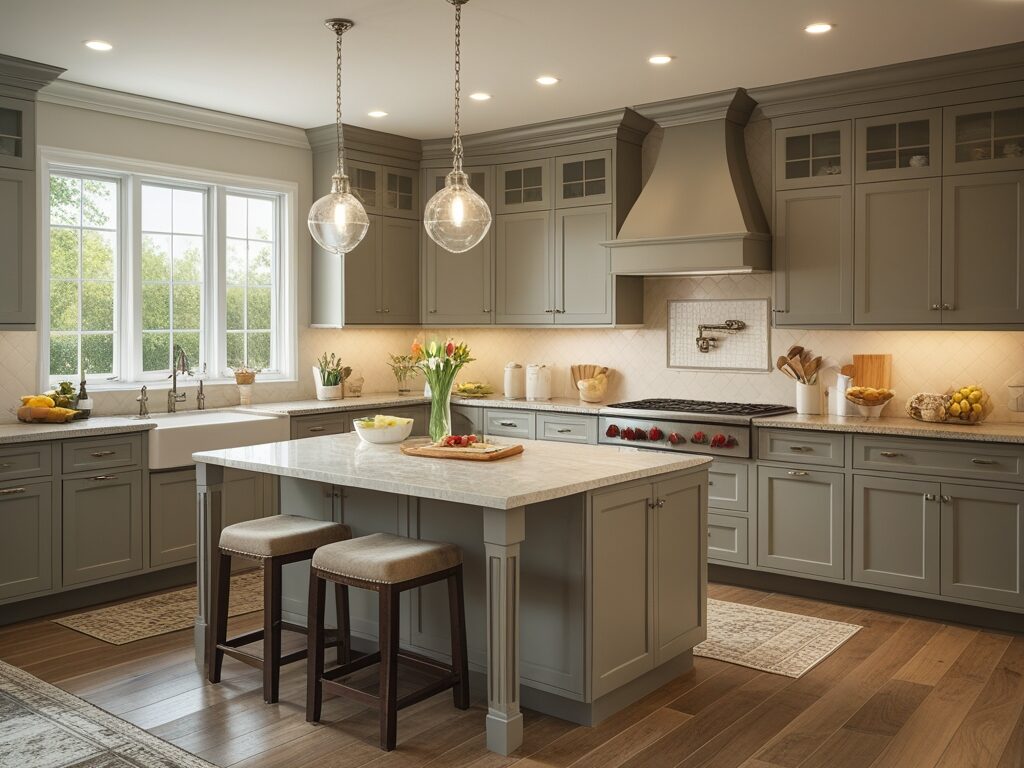
In summary, an L-shape kitchen offers numerous advantages that elevate both functionality and aesthetic appeal. With enhanced workflow and optimal space utilization, this design not only caters to the needs of aspiring chefs but also creates an inviting environment for entertaining guests.
By incorporating key design elements, maximizing storage solutions, and creating a functional work triangle, you can transform your cooking space into a culinary haven that reflects your personal style and passion for cooking.
As you embark on this exciting transformation journey, remember that your kitchen is more than just a place to prepare meals—it’s a canvas for creativity and a gathering spot for family and friends. Embrace the process with enthusiasm and let your imagination guide you in crafting a kitchen in L shape that truly resonates with who you are.
Whether you choose to tackle the project yourself or enlist the help of professionals, the result will be a beautifully designed space that inspires culinary adventures for years to come.
Find Some Kitchen Items From Here
FAQs for L-Shaped Kitchen Design
An L-shaped kitchen design features two adjoining walls that create an “L” shape, maximizing corner space and providing ample room for movement and functionality.
Benefits include efficient workflow, increased storage space, versatility in layout, and the potential for a dining area or island, making it ideal for both cooking and entertaining.
Use vertical cabinets, corner shelves, and pull-out drawers to optimize space. Consider incorporating a kitchen island for additional storage and workspace.
Yes! An island can enhance functionality by providing extra counter space and storage, as well as serving as a casual dining area.
L-shaped kitchens are versatile and can accommodate various styles, including modern, traditional, farmhouse, and minimalist designs.
Consider your overall home aesthetic and lighting. Light colors can make the space feel larger, while bold colors can add character. Always balance with complementary tones.
Built-in appliances like wall ovens and compact dishwashers are ideal for saving space. Ensure they are strategically placed for optimal workflow.
Yes, an L-shaped kitchen is great for small spaces as it maximizes corner areas and creates an open layout, allowing for better traffic flow while maintaining functionality.







